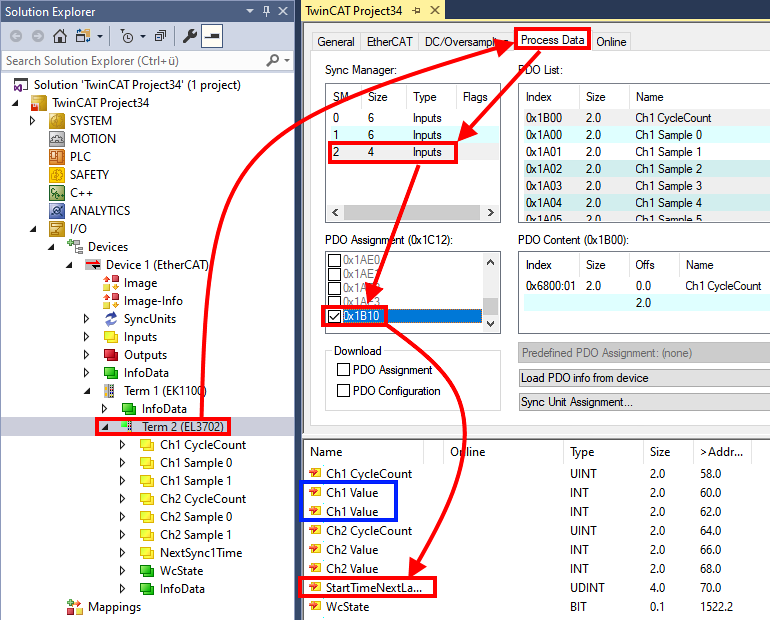Basic principles
An EtherCAT slave is basically parameterized through the following elements:
- Cyclic process data (PDO)
- Synchronization (Distributed Clocks, FreeRun, SM-Synchron)
- CoE parameters (acyclic object dictionary)
Note: Not all three elements may be present, depending on the slave.
For a better understanding of the export/import function, let's consider the usual procedure for IO configuration:
- The user/programmer processes the IO configuration in the TwinCAT system environment. This involves all input/output devices such as drives that are connected to the fieldbuses used.
Note: In the following sections, only EtherCAT configurations in the TwinCAT system environment are considered. - For example, the user manually adds devices to a configuration or performs a scan on the online system.
- This results in the IO system configuration.
- On insertion, the slave appears in the system configuration in the default configuration provided by the vendor, consisting of default PDO, default synchronization method and CoE StartUp parameter as defined in the ESI (XML device description).
- If necessary, elements of the slave configuration can be changed, e.g. the PDO configuration or the synchronization method, based on the respective device documentation.
It may become necessary to reuse the modified slave in other projects in this way, without having to make equivalent configuration changes to the slave again. To accomplish this, proceed as follows:
- Export the slave configuration from the project,
- Store and transport as a file,
- Import into another EtherCAT project.
TwinCAT offers two methods for this purpose:
- within the TwinCAT environment: Export/Import as xti file or
- outside, i.e. beyond the TwinCAT limits: Export/Import as sci file.
An example is provided below for illustration purposes: an EL3702 terminal with standard setting is switched to 2-fold oversampling (blue) and the optional PDO "StartTimeNextLatch" is added (red):

The two methods for exporting and importing the modified terminal referred to above are demonstrated below.